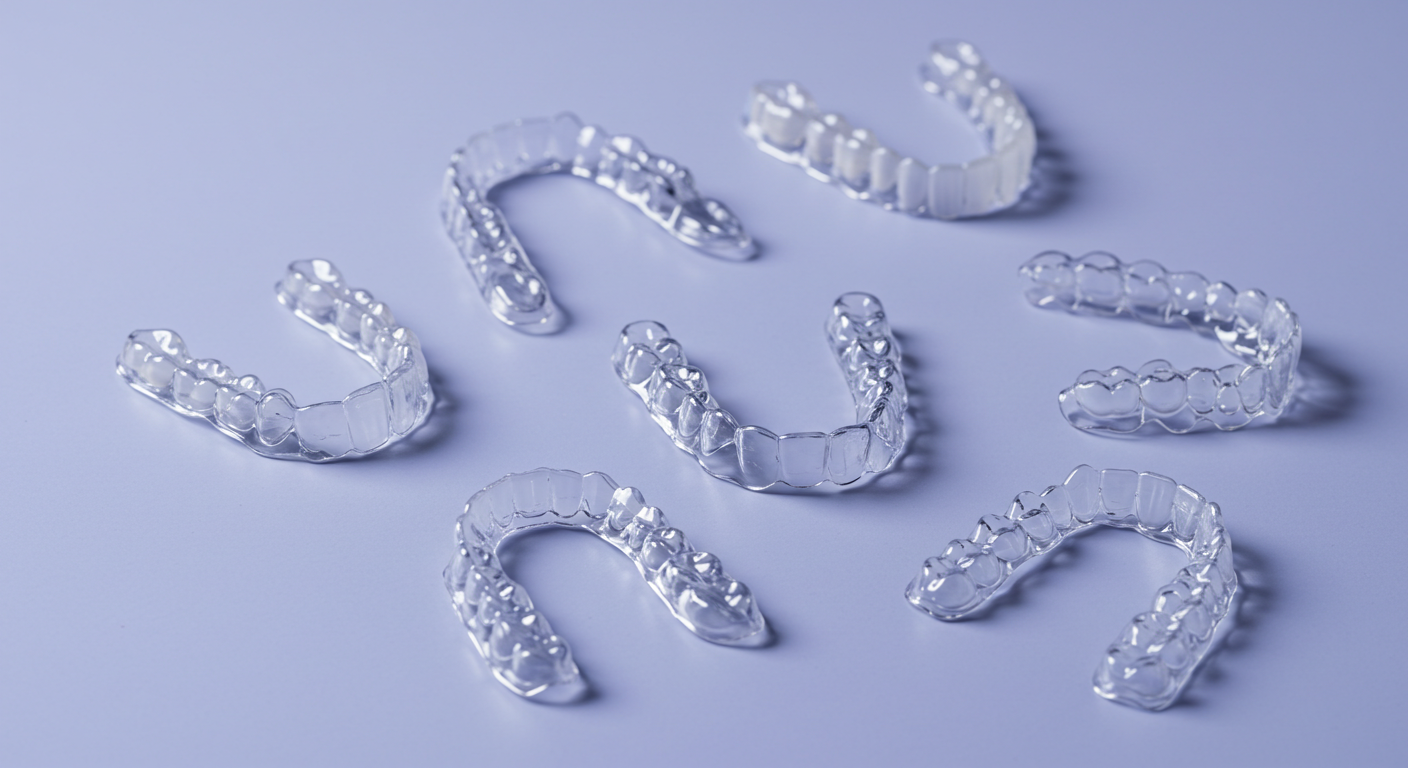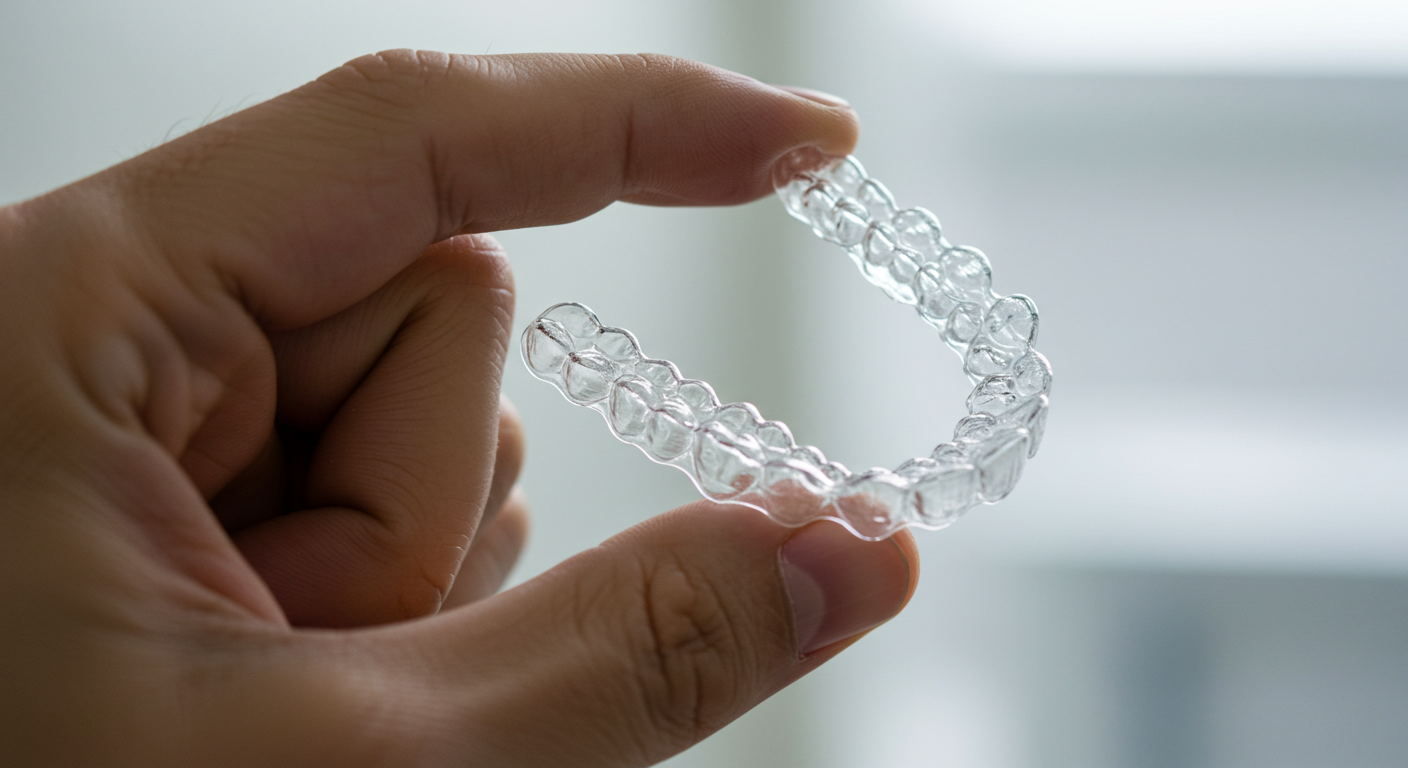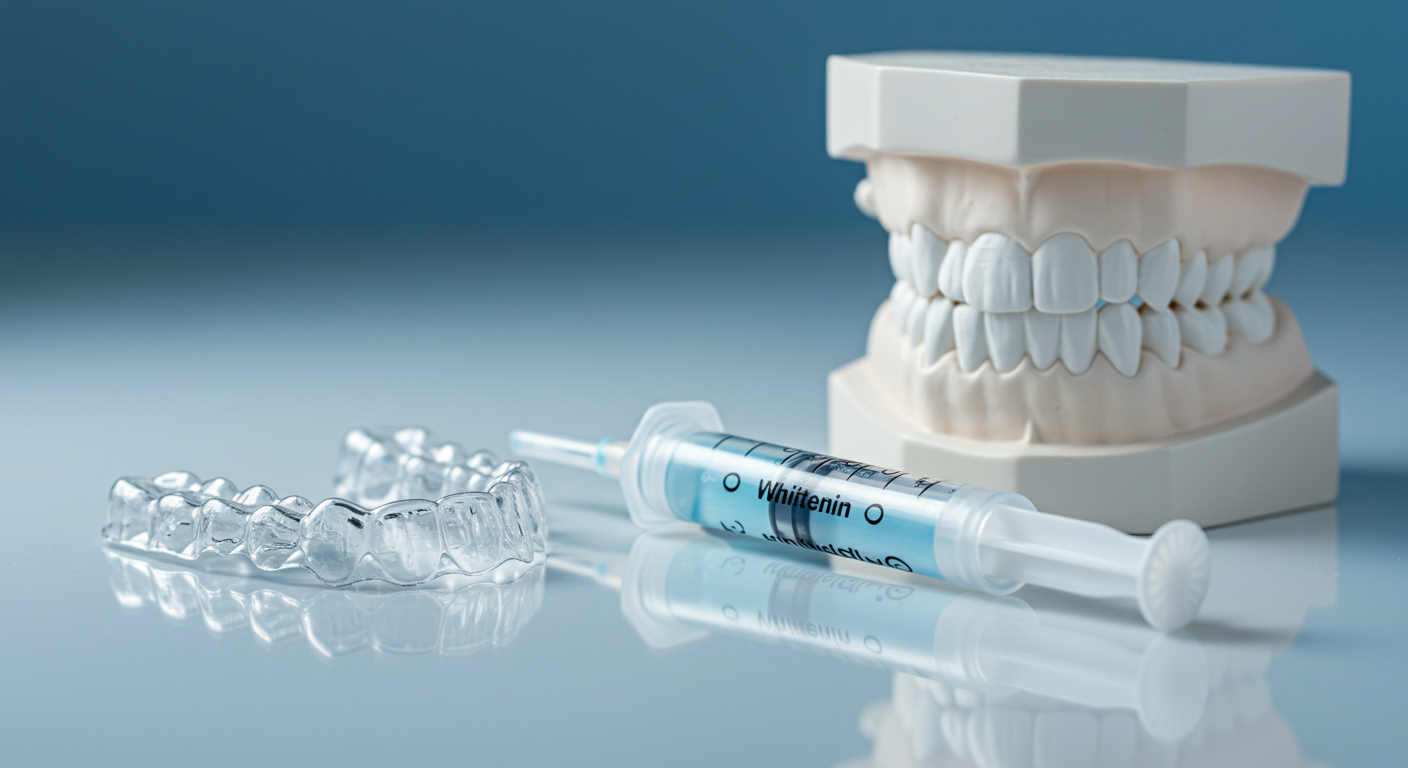Contents

What Is a Dental Tray? A Guide to Aligners, Night Guards & More
Faced with traditional orthodontic appliances that are often considered cumbersome, clear dental trays are gaining popularity, especially among adults, thanks to their discretion and increased comfort. But what exactly does the term "dental tray" cover?
This article explores the different types of trays, their specific functions, how they work, as well as practical information on their use and cost.
General Definition of a Dental Tray
What is a dental tray?
A dental tray is a removable appliance, usually made of a clear or semi-transparent thermoformed plastic material, custom-designed to fit perfectly over a patient's teeth. There are several types of trays, each with a very specific function.
We primarily distinguish between orthodontic trays, intended to move teeth, and other types designed to protect teeth, treat certain disorders, or apply specific products.
Orthodontic Trays (Clear Aligners)
This is the most well-known category today, popularized by brands like Invisalign. These trays, called aligners, are intended to align and straighten teeth, offering a discreet alternative to metal or ceramic braces.
They are particularly indicated for correcting various alignment issues such as crowding, spacing (diastemas), or tooth rotations, in cases deemed appropriate by the orthodontist.
How Do Aligners Work?
The principle is based on applying light, controlled forces to gradually move the teeth to their ideal position. The treatment involves several stages:
- Consultation and Planning: After a complete examination (X-rays, photos, 3D digital scans), the orthodontist creates a virtual treatment plan that simulates the tooth movement step by step.
- Custom Manufacturing: A series of unique aligners is fabricated to match each stage of the treatment plan.
- Wearing and Changing: The patient wears each aligner in the series for about 1 to 2 weeks, for at least 22 hours a day. Each new aligner applies a slightly different pressure to continue the programmed movement.
- Monitoring: Regular check-ups allow the orthodontist to monitor progress and provide the next sets of aligners. Adjustments (like placing attachments or performing interproximal reduction) may be necessary.
The tooth movement is thus gradual and generally less uncomfortable than the sometimes abrupt adjustments of fixed appliances.

Materials and Comfort
These trays are made from medical-grade plastic materials, designed to be flexible, durable, and biocompatible. Advanced technologies, such as Invisalign's SmartTrack™ material, aim to improve the efficiency of movements and patient comfort. Being perfectly fitted and removable, they facilitate dental hygiene and generally do not irritate the gums or cheeks as braces can.
Cost and Insurance Coverage
The price of a complete clear aligner treatment in the US varies widely depending on the complexity of the case, the duration, and the brand used, typically ranging from $3,000 to over $7,000.
- Insurance Coverage: Many dental insurance plans that cover traditional orthodontics will also cover clear aligners, often up to a certain percentage or a lifetime maximum. It is essential to check your specific plan's benefits.
Other Types of Dental Trays
Beyond orthodontics, other trays serve very different functions:
Occlusal Splints (or Night Guards)
Main Function: Relaxation and Protection
These rigid or semi-rigid trays, often worn at night, are intended to treat problems related to a bad bite (malocclusion) or muscle hyperactivity. They are indicated for:
- Bruxism (teeth grinding or clenching): they protect teeth from excessive wear.
- Temporomandibular Joint (TMJ) Disorders: they can help relieve muscle and joint pain by promoting a more relaxed jaw position.
The cost of a custom-made occlusal splint from a dentist can range from $400 to $800. It is often considered a major restorative procedure and may be partially covered by dental insurance.
Whitening Trays
These soft, thin trays are designed to hold a whitening gel (usually based on carbamide or hydrogen peroxide) in contact with the teeth for a specific period.
- The treatment is often done at home, wearing the trays for several hours a day or overnight, over a period of 7 to 15 days.
- A prior consultation with a dentist is essential to check for contraindications (cavities, cracks, gingivitis) and to ensure that this treatment is appropriate.
- The cost varies (often between $300 and $600 for a dentist-supervised treatment, including custom trays and product) and is not covered by insurance as it is considered a cosmetic procedure.

Fluoride Trays
These specific trays have a precise medical indication: preventing cavities in patients undergoing head and neck radiation therapy. This treatment can damage the salivary glands, reducing saliva flow and drastically increasing the risk of cavities.
They allow for the daily application of a highly concentrated fluoride gel. As part of an oncological treatment protocol, they are generally fully covered by insurance.
Athletic Mouthguards
Essential for many sports (contact sports, basketball, etc.), these thicker trays, made from a shock-absorbing material, protect the teeth, gums, lips, and sometimes even the jaws from direct or indirect trauma.
- They are worn only during sports activities.
- There are standard models (poor fit), "boil-and-bite" models (average fit), and custom-made models from a dentist, which offer the best protection and comfort.
- The cost of custom mouthguards varies and is generally not covered by dental insurance.
Conclusion: A Tray for Every Need
The term "dental tray" thus covers a very diverse reality. From aesthetic alignment to protection against bruxism or sports injuries, to whitening or medical prevention, each type of tray addresses a specific indication.
It is essential to consult a dentist or orthodontist to determine if a tray is necessary in your case, and if so, which type is best suited to your specific needs and oral health.
